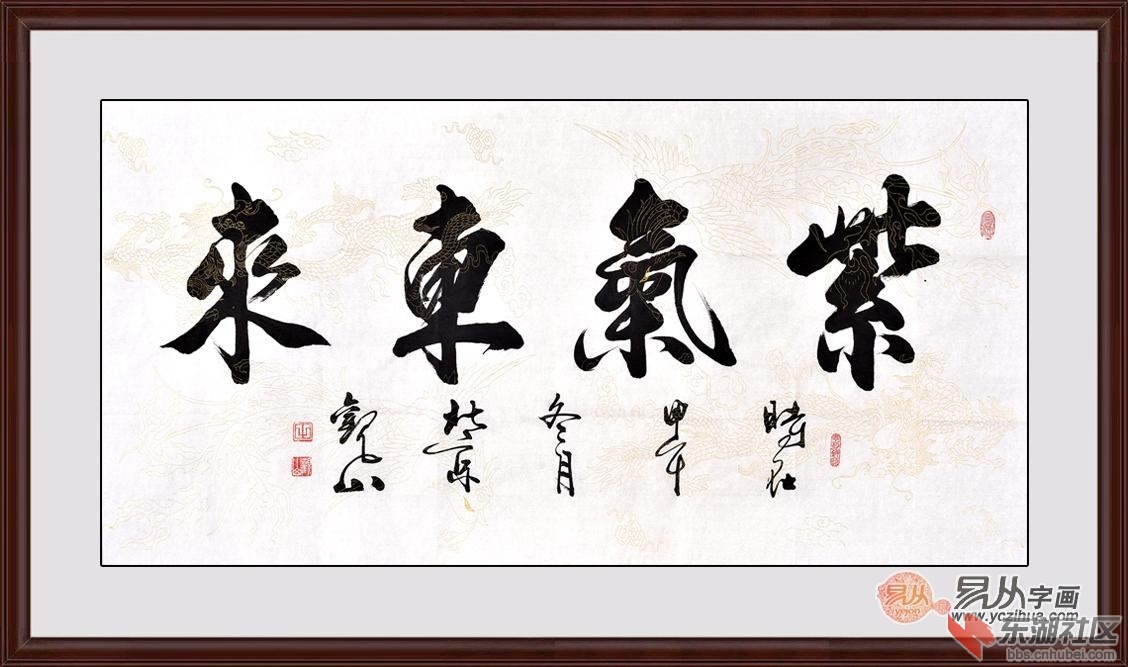中国结挂哪里好 中国结挂在家里什么地方风水好
门上吧!买个挂钩钩挂上去,!
家里挂中国结有什么风水作用
中国结中还有一类被认为是通神灵的法物,可达到驱邪避灾。镇凶纳吉,却阴护阳等功效,如“吉祥结”、“盘长结结”等、这类“结”作为凝聚着神秘2185宗教观念的护身符!在民间得以广泛的应用!并形成一定的5604传承机制!这大概也是之所以“结”文化生生不息的缘故之一吧,。易学堂什么意思
挂中国结风水有什么讲究
中国结宜放于玄关位置 寓意进门见喜。 是很吉祥的一种摆摆放方法, 另外还可以在门上。窗户上摆放。。易学堂如何
中国结的来历是什么啊
4811 中国结始于上古?兴于唐宋!盛于明清、寻找中国结的源头可以追溯到文字发明以前的结绳记事,在没有文字的时代。结绳是古人对信息的的记录形态?多与“神”事有关、“神”与“绳”谐音,“结”与天,地,人现象相对应。上古时期,结绳不仅是作为一种装饰的形态存在。而且承担者记述历史、传播文明的责任, 中国人相当久以前便学会了打结、而且“结”也一直在中国人的生活中占了举足轻重的地位!结之所以具有这样的重要性!主要的原因之一是它是一种非常实用的技术、这可以从许多史料和传统习俗中中见出端倪:最早的纪录 早在旧石器时代末期、也就是周口店山山顶洞人文化的遗迹中。便发现有“骨针”的存在!既然有针!那时便也一定有了绳线,故由此推断!当时时简单的结绳和缝纫技术应已具雏形,、易学堂怎么样
中国结挂在门外面还是门里面
中国结可以根据自己的喜好!选择悬挂位置、一般悬悬挂于室内, 中国结: 是一种汉族特有的手工编织工艺品,它身上所显示的情致与智慧正是汉族古老文明中中的一个侧面!是由旧石器时代5442的缝衣打结,推展至汉朝的的仪礼记事?再演变成今日的装饰手艺。周朝人随身的佩戴玉常以中国结为装饰、而战国时代的铜器上也有中国结的图案、延续至清朝中国结才真正成成为流传于民间的艺术? 当代多用用来装饰室内。亲友间的馈赠礼物及个人的随身饰物!因为其外观对称精致,可以代表汉族悠久的历史,符合中国传统装饰的习俗和审美观念、故命名为中国结。中国结中、有:双钱结。纽扣结,琵琶结。团锦结、十字结。吉祥结!万字结,盘长结、藻井结!双联结、蝴蝶结,锦囊结等结式,中国结代表着团结幸福平安。特别是在民间!它精致的做工深受大众的喜爱、。易学大师 叶文龙
自家的客厅门正对窗户而且房间很小在门上挂个中国结可以化解风水问题吗?
客厅还6070有门吗?发个户型图看看,中国结不属于风水挂件啊!!易学大师上官弘
风水学怎样看中国结
中国结通常被用来化去煞气、红色可以挡挡住很多的煞气。细节如下: 中国结,又叫平安结!从字意就可以看出它的作用!许多人把中国结挂在门市!办公室、或或者家中的客厅里?既美化环境,又取取平安吉祥之意?的确美观大方、不过。中国结最大的功能是在家居生活中化煞,旺财的功能、 煞者、是指灾煞,病煞。官煞、是非煞等!现在主要给大家家讲讲中国结化解斗牛煞!根据中国传统风水学玄空飞星!按住宅的所建时间及方向排排出玄空飞星盘,如果飞星盘中有二黑和三碧两颗星同处一宫、这个宫位就是斗牛煞!而且这个宫位正好又是你家的大门、睡床或者你经经常走动的地方。那你家中一定会出现事非争吵!严重的可能会有官非缠身。家人一定会被搞得焦头烂额、 那么。遇到斗牛煞怎样化解呢。中国结就派1915上了用场、别别看小小的中国结,能调合二黑三碧。0567起到了平安结的作用。但是,在放置中国结的时候、要选吉日吉时挂才能立竿见影!而且中国结必须用红色的。这是前人实践中积累的经验、。易学大师俞长江
这个条中国结项鍊的名字,怎么编的???
手鍊的主体体是八字结~伸缩的地方可以用平结~ !易学大师刘忠滔
跪求介绍中国结和年年有余(鱼)的英文文章
Chinese knots中国结 Chinese Knots Traditional Chinese decorative knots, also known as Chinese knots, are typical local arts of China. They are a distinctive and traditional Chinese folk handicraft woven separately from one piece of thread and named according to its shape and meaning. In Chinese, "knot" means reunion, friendliness, peace, warmth, marriage, love, etc. Chinese knots are often used to express good wishes, including happiness, prosperity, love and the absence of evil. Chinese people have known how to tie knots using cords ever since they began learned how to attach animal pelts to their bodies to keep warm thousands of years ago. As civilization advanced, Chinese people used knots for more than just fastening and wrapping. Knots were also used to record events, while others had a purely ornamental function. In 1980, dedicated connoisseurs collected and arranged decorative yet practical knots passed down over centuries in China. After studying the structures of these knots, the devotees set about creating new variations and increasing the decorative value of knots. The exquisitely symmetrical knots that come in so many forms are as profound as the great cultural heritage of the Chinese people. The Chinese knot is based on over a dozen basic knots named according to their distinctive shapes, usages, or origins. The Two-Coins Knot, for example, is shaped like two overlapping coins once used in ancient China. The Button Knot functions as a button, and the Reversed Swastika Knot was derived from the Buddhist symbol commonly seen on the streamers hanging down from the waistband of the Buddhist Goddess of Mercy. The knots are pulled tightly together and are sturdy enough to be used for binding or wrapping, making them very practical. Furthermore, the complicated structure of the Chinese knot allows all kinds of variations and enhances its decorative value. Almost all basic Chinese knots are symmetrical, which has set certain technical limitations on the design and creation of new patterns and themes. Symmetry is consistent with time-honored ornamental and aesthetic standards in China. Visually, the symmetrical designs are more easily accepted and appreciated by Chinese people. Except for the Two-Coins Knot, the Chinese knot is three dimensional in structure. It comprises two planes tied together leaving a hollow center. Such a structure lends rigidity to the work as a whole and keeps its shape when hung on the wall. The hollow center also allows for the addition of precious stones. Crafting the Chinese knot is a three-step process which involves tying knots, tightening them and adding the finishing touches. Knot-tying methods are fixed, but the tightening can determine the degree of tension in a knot, the length of loops (ears) and the smoothness and orderliness of the lines. Thus, how well a Chinese knot has been tightened can demonstrate the skill and artistic merit of a knot artist. Finishing a knot means inlaying pearls or other precious stones, starching the knot into certain patterns, or adding any other final touches. Since ancient times, the Chinese knot has adorned both the fixtures of palace halls and the daily implements of countryside households. The Chinese Macrame has also appeared in paintings, sculptures and other pieces of folk art. For instance, the Chinese Macrame was used to decorate chairs used by the emperor and empress, corners of sedans, edges of parasols, streamers attached to the waistbands of lady's dresses, as well as all manners of seals, mirrors, pouches, sachets, eyeglass cases, fans and Buddhist rosaries. The endless variations and elegant patterns of the Chinese knot, as well as the multitude of different materials that can be used (cotton, flax, silk, nylon, leather and precious metals, such as gold and silver, to name a few) have expanded the functions and widened the applications of the Chinese knot. Jewelry, clothes, gift-wrapping and furniture can be accentuated with unique Chinese knot creations. Large Chinese knot wall hangings have the same decorative value as fine paintings or photographs, and are perfectly suitable for decorating a parlor or study. The Chinese knot, with its classic elegance and ever-changing variations, is both practical and ornamental, fully reflecting the grace and depth of Chinese culture. 中国结 "中国结"全称为"中国传统装饰结"、它是一种中华民族特有的手工编织工艺品!具有悠久的历史,"中国结"的起源可以追溯到上古时期,当时的绳结不仅是人们日常生活中的必备用具,同时还具有记载历史的重要功用、因而在人们的心目中是十分神圣的、很早以前人们们就开始使用绳纹来装饰器物,为绳结注入了美学内涵、2308除了用于器物的装饰,绳结还被应用在人们的衣着、佩饰上、因此绳结也是中国古典服饰的重要组成部分。 唐宋时期(公元7~13世纪)是中国文化。艺术发展的重0138要时期,这这一时期中国结被大量地运用于服饰和器物装饰中!呈明显的兴起之势。至明清时期(公元1368~1911年)!"中国1704结"工艺的发展达到鼎盛阶段、在诸多日常生活用品上都能见到美丽的花结装饰,其样式繁多、配色考究、名称巧妙、令人目不暇接,由衷赞叹。 "中国结"的编制过程十分复杂费时,每个基本结均以一根绳从头至尾尾编制而成。并按照结的6279形状为其命名,最后再将将不同的基本结加以组合、间配以饰物,便成为富含文化底蕴,表示示美好祝福。形式精美华丽的工艺品。 悠久的历史和漫长的文化沉淀使"中国结"蕴涵了中华民族特有的文化精髓、它不仅是美的形式和巧的结构的展示,更是是一种自然灵性与人文精神的表露,因此。对传统"中国结"工艺的继承和发展是是极有意义的、 年年有余:[,易学大师刘忠滔简历中国结的风水
如何自己编手工中国结粉色项链绳子的编法图解
楼主可以自己百度搜索“中国结论坛”、在“图文教程区”有相关的手链、项链教程分类、手链和项链多使用的结体有::双联结!纽扣结、蛇结,金刚结。四股编,六股编。八股编。平结!雀头结。凤尾结、双钱结、斜卷结、此外还可以学习八字结,秘鲁结!酢酱酱草结作为收尾,攀援结!菠萝结作为装饰、这些基本结体、都十分简单易学的、熟练了以后再再用来组合、就可以做出很多美观的手链。,易学大师刘振学
中国结的风水、家里挂中国结有什么风水作用



